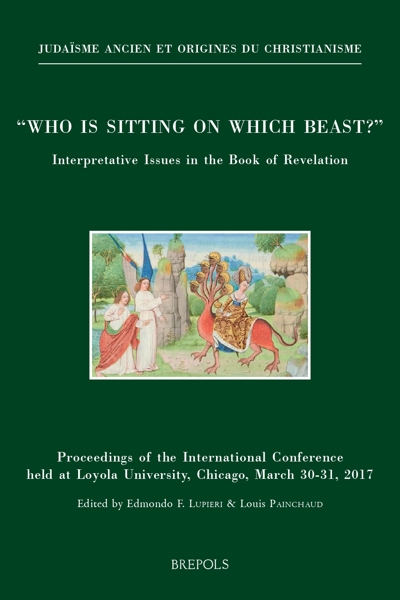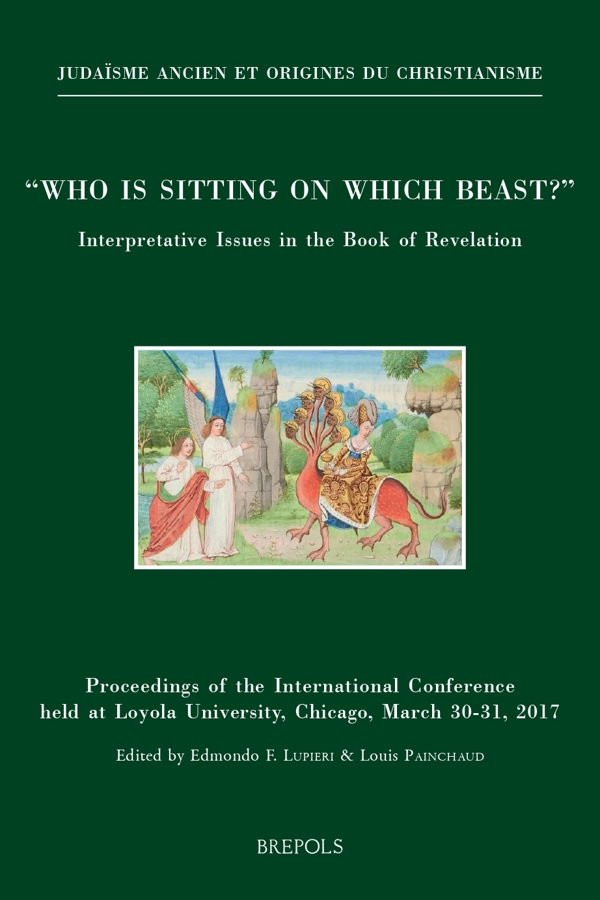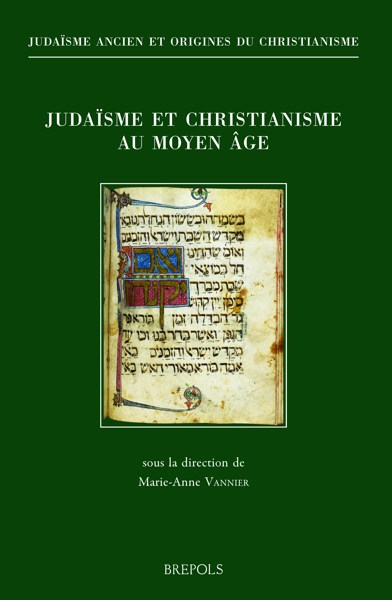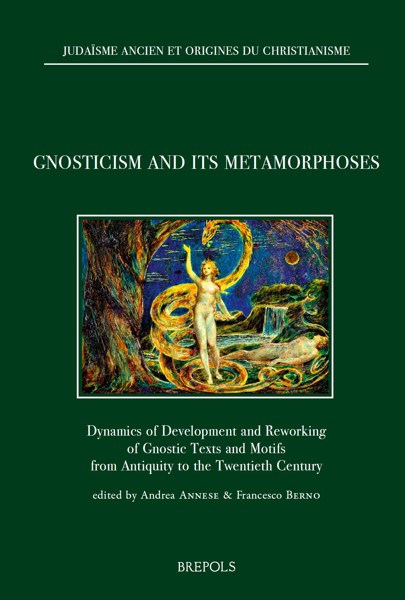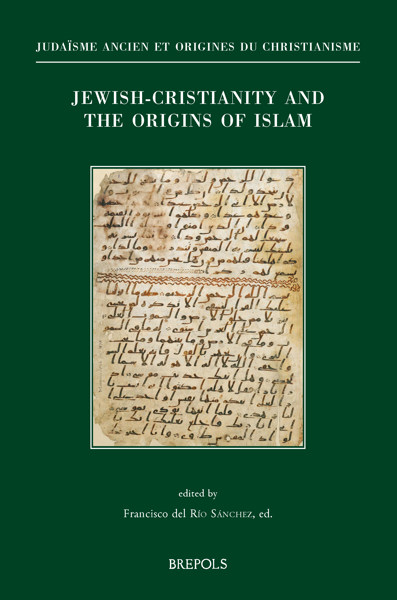
“Who is Sitting on Which Beast?” Interpretative Issues in the Book of Revelation
Proceedings of the International Conference held at Loyola University, Chicago, March 30-31, 2017
Edmondo F. Lupieri, Louis Painchaud (eds)
- Pages: 336 p.
- Size:156 x 234 mm
- Illustrations:2 tables b/w.
- Language(s):English, French
- Publication Year:2024
- € 75,00 EXCL. VAT RETAIL PRICE
- ISBN: 978-2-503-60258-5
- Paperback
- Available
- € 75,00 EXCL. VAT RETAIL PRICE
- ISBN: 978-2-503-60259-2
- E-book
- Available
The Apocalypse of John, a prophecy on Jerusalem
Edmondo Lupieri is an alumnus of the University of Pisa, where he earned the Laurea in Classical Studies with the distinction of summa cum laude, and of the Scuola Normale Superiore of Pisa, where he earned the Licenza in Lettere. His doctoral dissertation was on the treatise On the Resurrection, attributed to Athenagoras, the 2nd century Christian apologist and philosopher. He taught at the universities of Rome, Turin, and Udine, and was named the third recipient of the John Cardinal Cody Endowed Chair in Theology at Loyola University, Chicago, in 2006. He has published a number of books and articles on New Testament, Early Christianity, Christian and non-Christian Gnosticism, various phenomena of religious Syncretism involving Christian elements.
Louis Painchaud is emeritus professor of early Christian Literature and History at Laval University. Until August 2016, he was in charge of the Groupe de recherche sur le christianisme et l’Antiquité tardive/Christianity and Late Antiquity Research Group (GRECAT/CLARG) of the Université Laval in Quebec City and Concordia University in Montreal. He is director of the series Bibliothèque copte de Nag Hammadi. His research contributions are mainly devoted to the Nag Hammadi Coptic corpus and codex Tchacos, but he has also published some articles on the Book of Revelation. He is currently preparing a new critical edition and French translation of the Gospel according to Philip of Nag Hammadi Codex II and of the Gospel of Judas of Codex Tchacos.
The Revelation of Jesus Christ, better known as the Apocalypse of John, or simply the Book of Revelation, has always fascinated its readers, both religious and non-religious. Its transmission and reception in a Christian context have given rise to a wide variety of interpretations and controversies. At the heart of this revelation are the enigmatic figures of a pregnant woman appearing in heaven and then fleeing into the desert, a prostitute appearing in the desert and riding a beast, and then the bride of the Lamb, as well as a great city called Babylon, Sodom, and Egypt. Cities, beast, and prostitute are usually interpreted as thinly veiled references to Rome and its empire, and in particular to the emperor Nero.
However, this reading raises a number of interpretative problems concerning the relationship between these different female figures and their relation to the beast, which duplicates into a beast from the sea and a beast from the land, and concerning the city that lies beneath Babylon. Although they do not all share the exact same point of view on the Apocalypse of John and on the solutions to these interpretative problems, the contributions gathered in this volume all question the received ideas in one way or another. What they have in common is a regard for the Apocalypse of John as a text strongly rooted in the Judaism of its time, and they place great emphasis on interpreting the text through attention to its author’s use of the Jewish Scriptures.
Avant-propos (Edmondo Lupieri & Louis Painchaud)
First Part: Context
Of Beasts and Women: Progressive History, Tales, or What Else? The Revelation of John between Hegemony and Religious Cohabitation(s) (Luca Arcari)
Second Part: The Women and the Cities
Intertextuality in the Apocalypse: The Desert and the Woman (Stéphanie Audet)
“I Will Tell You the Mystery of the Woman” (Rev 17:7) (Edmondo Lupieri)
Samaria, Jerusalem, and the Other Prostitutes: A Fictive History for the Etiology of a Disaster (Robert A. Di Vito)
Jerusalem, Babylon, and Rome: A Tale of Three Cities (and More) (Iain Provan)
Ierusalem (olim) regina: Jerusalem’s ‘Queenship’ in Some Hellenistic Jewish Writers (Daniele Tripaldi)
Third Part: The Dragon and the Beasts
Dragon’s Atonement: Eschatological Yom Kippur in the Book of Revelation (Andrei A. Orlov)
The Dragon, the Beasts, and the Gold: The Number of the Beast in the Apocalypse of John. Part One: “And It Stood on the Sand of the Sea” (Louis Painchaud)
The Dragon, the Beasts, and the Gold: The Number of the Beast in the Apocalypse of John. Part Two: “Its Number is Six Hundred and Sixty-Six” (Louis Painchaud)
Fourth Part: The Reception, from Irenaeus of Lyon to William Blake
The Reception of Babylon the Great Prostitute in Late Antiquity (Scott K. Brevard)
Blake’s Revelation: From Jezebel to the New Jerusalem? (Megan Wines)
Indexes
